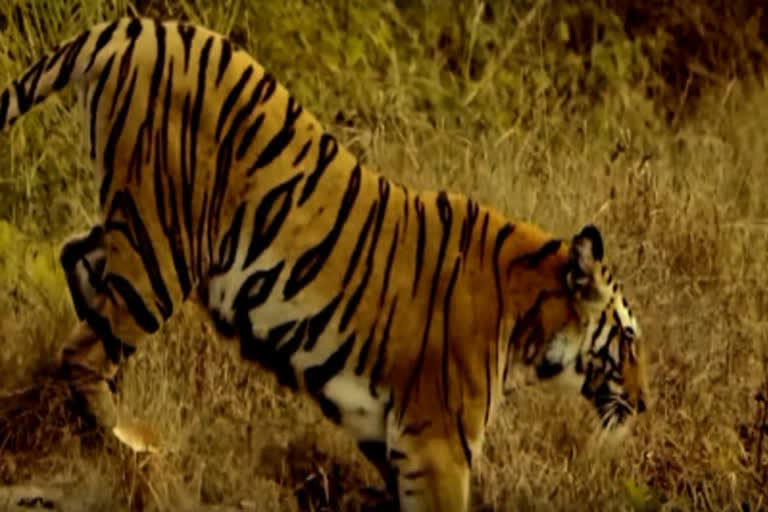Patna: Amid tiger-fear running rampage in and near Bihar's Valmiki Tiger Reserve (VTR), the National Tiger Conversation Authority (NTCA) on Friday ordered forest officials to eliminate a big cat being unsuccessfully pursued by officials for what has now been several weeks.
The order was provided after it was determined that the tiger had turned man-eater, hunting down at least two persons within the last two days, its latest target was a man in Dumari village who had gone out to relieve himself. The latest attacks, alongside older ones, tallied a total of four such deaths in the last month.
Speaking to ETV Bharat, Debal Roy, the Chief Wildlife Warden of West Bengal, meanwhile observed that the phenomena of a tiger turning into a man-eater happen only after its eating habit fundamentally changes due to prevailing circumstances.
“When the eating habit changes, the tiger becomes a man-eater. There are two theories. It always happens when the big cat becomes old and incapable of hunting due to old age. In this situation, they hunt the easy target and switch over to domesticated animals and human beings. The other reason is accidental man-eating, when they kill the human and find it easy to hunt and switch to man-eating,” Roy said.
Also read: Bihar: Man-eater tiger claims its second victim in two days
Asked about behavioral changes, he stated that the main difference in behavior in these cases was the big cats moving closer to human habitation due to the newly introduced variance in food habits. "They go close to humans for hunting. No major change takes place in their animal instinct and philological parameters," the warden added.
Noting that there lay a contrast between the man-eater in VTR and tigers in Sundarbans, he added that lack of human contact prevented big cats in the mangrove region to turn into man-eaters.
“In Sundarbans, there are no man-eating tigers because we do not allow humans to enter their territory. In case of mistaken entrances, they kill them but they don't eat them. If the tiger does not eat the flesh, we cannot call them a man-eater. The VTR incident is a rare one. There are many incidents in which a tiger has killed humans, but eating the flesh after killing is a different issue altogether," he said.
“What I am speaking about is theoretical and the field director of the VTR will be able to explain which killing is man-eating and which one is outside the parameter of man-eating. The killing of human beings is not rare when they venture into the territory of the tiger, however, a tiger eating the flesh is rare," he also said.
Also read: Bihar: Elusive man eater tiger kills girl at a village close to Valmiki Reserve Forest
VTR Field Director Nesamani K, on the other hand, said four killings so far had been confirmed and were carried out by the man-eater. “As of now, I can say that one tiger has killed four humans and the other three we are still investigating. I am not sure that the rest of the three were killed by the tiger. In one case we found that flesh was eaten by a tiger.
There are chances that other animals must have eaten it. Chief Wildlife Warden Prabhat Kumar Gupta has given the order to eliminate the tiger as we are unable to stop it. We have been at it for the past 15 days, but things have gone out of control," he told ETV Bharat over a telephone conversation. Bihar's lone tiger reserve, known as VTR, is one of the 14 tiger reserves of India that got the Conversation Assured Tiger Standard accreditation last year.



